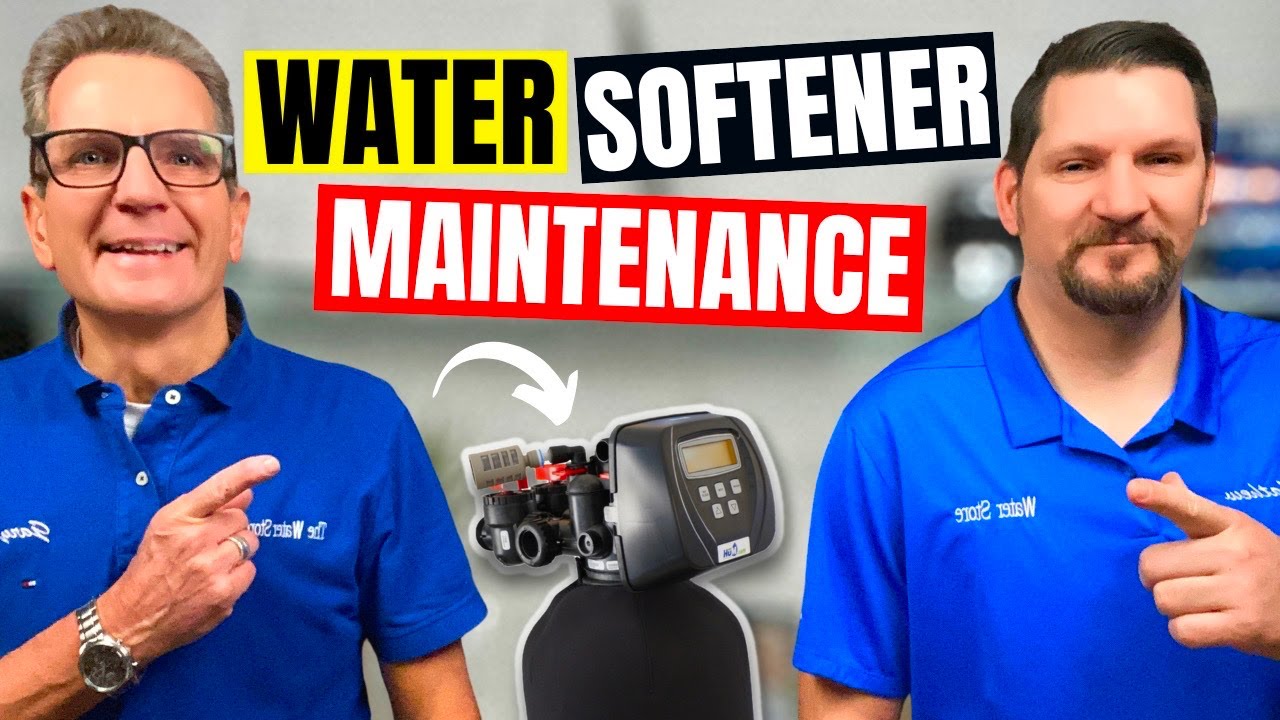
Looking for insider tips to keep your water softener in tip-top condition for your family? Unsure where to start or what to avoid? We've got you covered! In this blog, Gary the Water Guy and his tech team member, Mathew, share their professional Clack WS1 water softener maintenance tips and tricks.
By the end of this blog, you'll have a clear understanding of where to start, what tools to keep in your maintenance arsenal, and precisely how and when to execute proper maintenance. Don't miss out on insider knowledge from the pros — follow along to learn how you can keep your water softener running flawlessly for your family's benefit.

GETTING STARTED
First things first, it's essential to know what make and model of water softener you have in your home, cabin, or cottage. While most softeners share similar designs, each brand has specific maintenance nuances.
Today's spotlight is on the industry's best, the Clack valved water softener, also used by popular manufacturers like HUM, Water Depot, Nelsen, and many more.
How do you know if you have a Clack valve? Simply look at the top and back of your unit for red bypass valve handles with arrow shapes.
BENEFITS OF A WATER SOFTENER
Have you ever noticed that your shower and faucets have a stubborn buildup that is impossible to get rid of? If you have hard water, then it's time to consider a water softener!

Installing a water softener helps your home become easier to clean with no more pesky scale buildup! Not only that, but you'll also notice softer hair and skin for your family, as well as longer-lasting appliances. Plus, it allows you to reduce soap and shampoo use by half, which means you can save some serious cash. And maintenance? It's easy and low-cost.
Say goodbye to stubborn buildup and hello to a more efficient and cost-effective home with water softeners. And, if you have a small amount of iron in your water, these handy devices can help take care of that, too!
>> Do you know how a Water Softener works? Watch this video from Gary the Water Guy to learn more.
TYPES OF WATER SOFTENERS

If you're in the market for a water softener, you may be wondering what types are out there. Essentially, there are two main types to consider: single and dual tank models. Additionally, you'll want to decide if you want an individual unit or a combo model. With these options in mind, you'll be able to choose the best water softener for your needs.
>> Shop the HUM Water Softener here!
>> Shop HUM Gemini Water Softener here!
>> Shop HUM Water Softener Sweat Jackets here!
WATER SOFTENER MAINTENANCE TIPS

Most water softener models use salt to regenerate the media after cleaning it out. Aside from adding salt and the occasional res-care addition and cleaning the unit out, the system pretty much maintains itself! Here are some pro DIY tips and great videos if you'd like to learn more.
-
Adding salt. Both tannin filters and water softeners use the same kind of salt. I always suggest pellets. This video will give you more info on the best softener salt to use! >>
WATCH HERE
Wondering how much salt should be in your brine tank? >> FIND OUT HERE
As a simple preventive maintenance tip, before you add salt each time, stir up what's left in the tank with a stick to ensure nothing's stuck or clogging the bottom of the tank!
-
Water softener settings. Be sure to know your water hardness, iron and manganese to set it properly for your home. Want to learn how to program the best water softener valve in the business? >> CLICK HERE.
-
Cleaning the injector. With well water, the injector should be cleaned every 5 years. If you have city water, the injector should be cleaned every 10 years. If using your water softener to also get rid of the iron in your well water, you’ll need to clean or replace the injector every 2 years.
For DIY Water Softener Troubleshooting, check out this great video from Gary the Water Guy! >> WATCH VIDEO
-
Clean out the brine tank.
If you currently are using or have ever used rock salt, clean out the brine tank of your softener every 5 years. With well water you should clean the bring tank every 5 years, and city water every 10 years. This video shows you how to DIY clean your brine tank. >>
WATCH NOW
PRO TIP: I suggest you run out of salt once per year to keep your brine tank cleaner.
-
Exercising the bypass valve. Turning the bypass valves every couple of months to ensure they can spin easily will keep it from leaking if and when you need it in the future.
- Add res-care annually to restore water softener performance. Add media cleaning solution more often if the water softener is used to remove iron from your water, too. This video shows you how! >> WATCH NOW
>> For our simple DIY Water Softener Installation guide, click
here!
>> Find the best Water Softener for your family right here!



